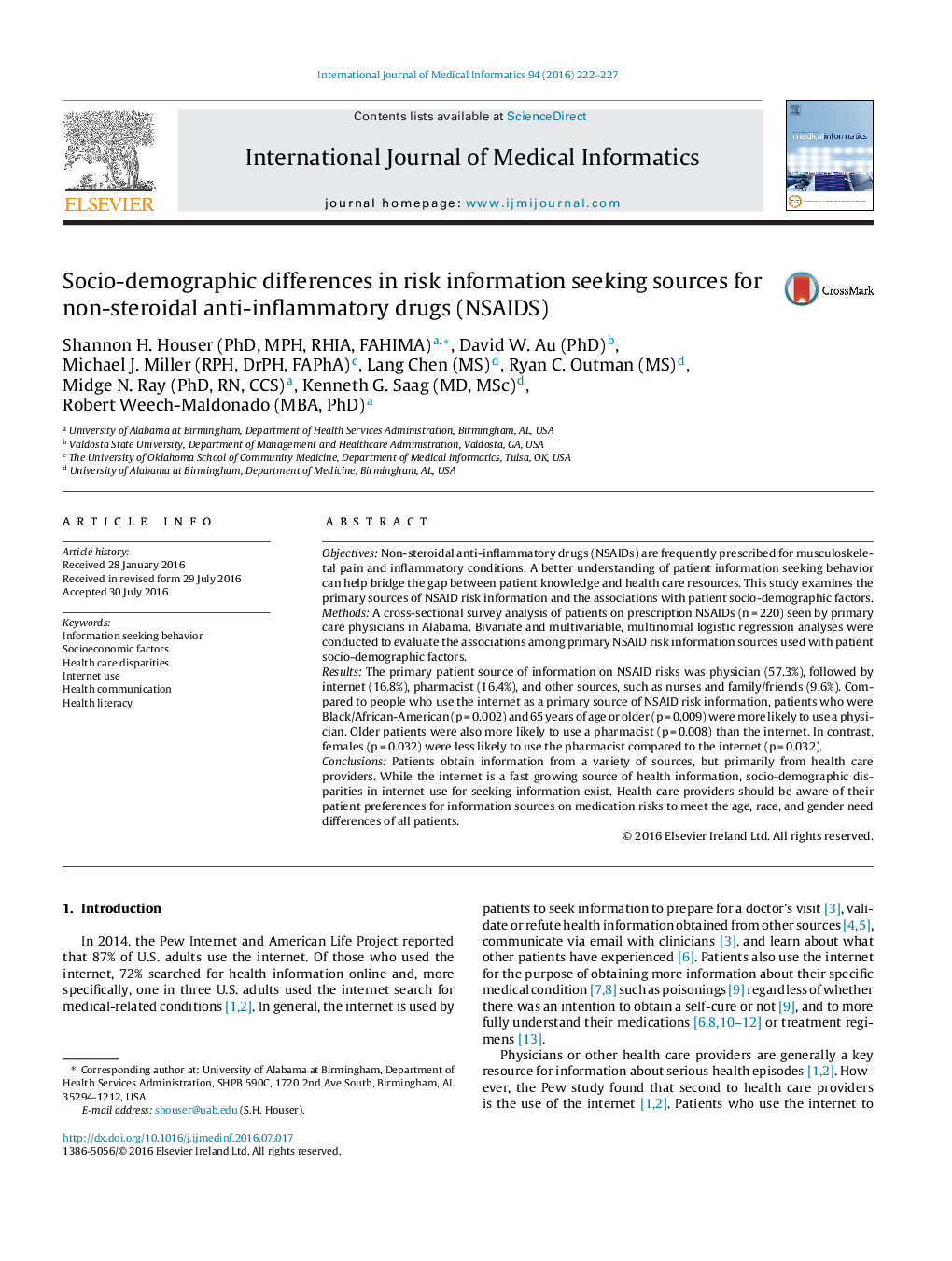| کد مقاله | کد نشریه | سال انتشار | مقاله انگلیسی | نسخه تمام متن |
|---|---|---|---|---|
| 515998 | 1449094 | 2016 | 6 صفحه PDF | دانلود رایگان |
• Patients use internet search for medication risk information as well as consulting with their providers and family/friends.
• Patient race, age and gender are factors related to medication risk information seeking behavior.
• Minorities and older patients are more likely to rely on their physician for medication risk information than on the internet.
• Men are more likely to rely on their pharmacist for medication risk information than on the internet, compared to women.
ObjectivesNon-steroidal anti-inflammatory drugs (NSAIDs) are frequently prescribed for musculoskeletal pain and inflammatory conditions. A better understanding of patient information seeking behavior can help bridge the gap between patient knowledge and health care resources. This study examines the primary sources of NSAID risk information and the associations with patient socio-demographic factors.MethodsA cross-sectional survey analysis of patients on prescription NSAIDs (n = 220) seen by primary care physicians in Alabama. Bivariate and multivariable, multinomial logistic regression analyses were conducted to evaluate the associations among primary NSAID risk information sources used with patient socio-demographic factors.ResultsThe primary patient source of information on NSAID risks was physician (57.3%), followed by internet (16.8%), pharmacist (16.4%), and other sources, such as nurses and family/friends (9.6%). Compared to people who use the internet as a primary source of NSAID risk information, patients who were Black/African-American (p = 0.002) and 65 years of age or older (p = 0.009) were more likely to use a physician. Older patients were also more likely to use a pharmacist (p = 0.008) than the internet. In contrast, females (p = 0.032) were less likely to use the pharmacist compared to the internet (p = 0.032).ConclusionsPatients obtain information from a variety of sources, but primarily from health care providers. While the internet is a fast growing source of health information, socio-demographic disparities in internet use for seeking information exist. Health care providers should be aware of their patient preferences for information sources on medication risks to meet the age, race, and gender need differences of all patients.
Journal: International Journal of Medical Informatics - Volume 94, October 2016, Pages 222–227
